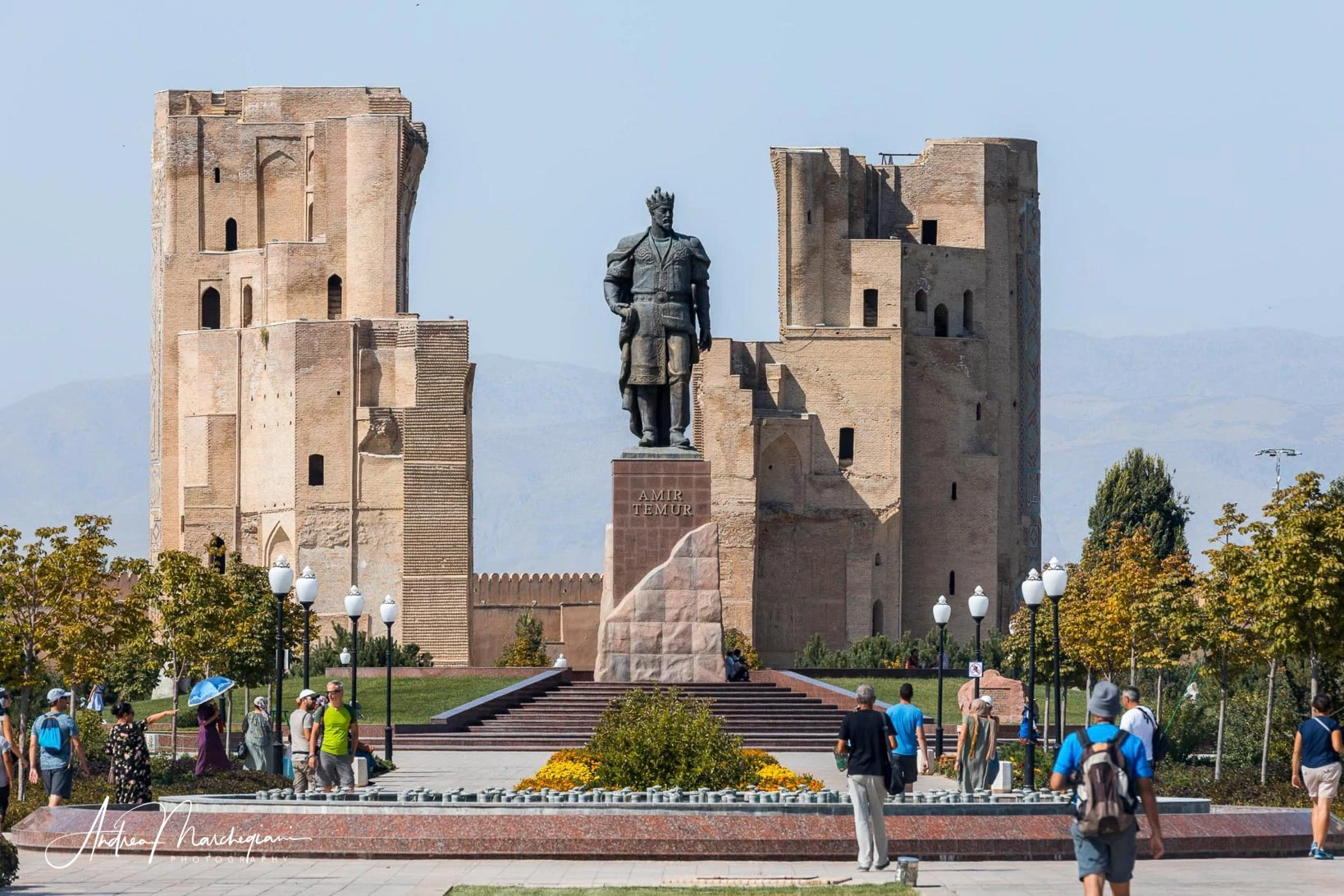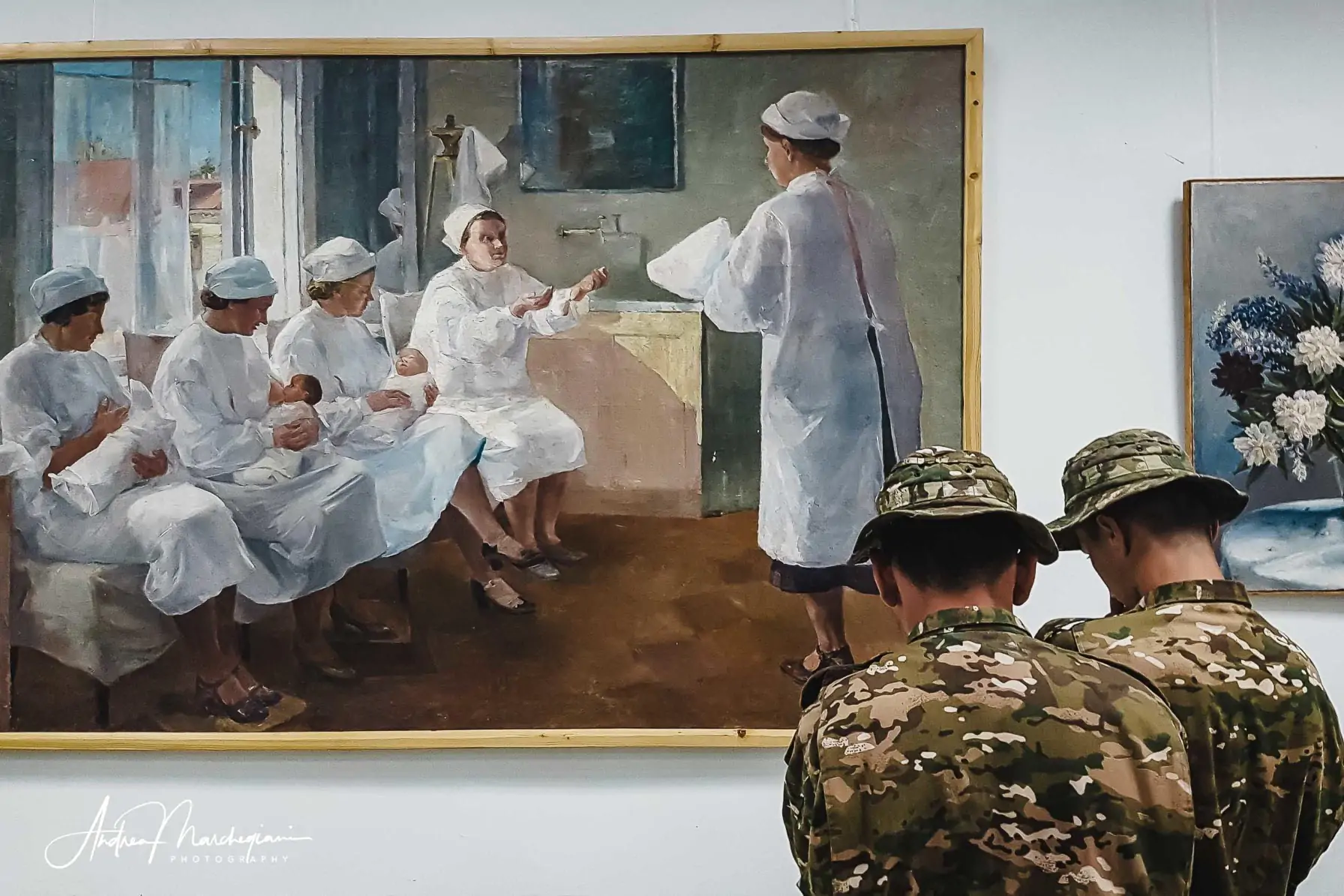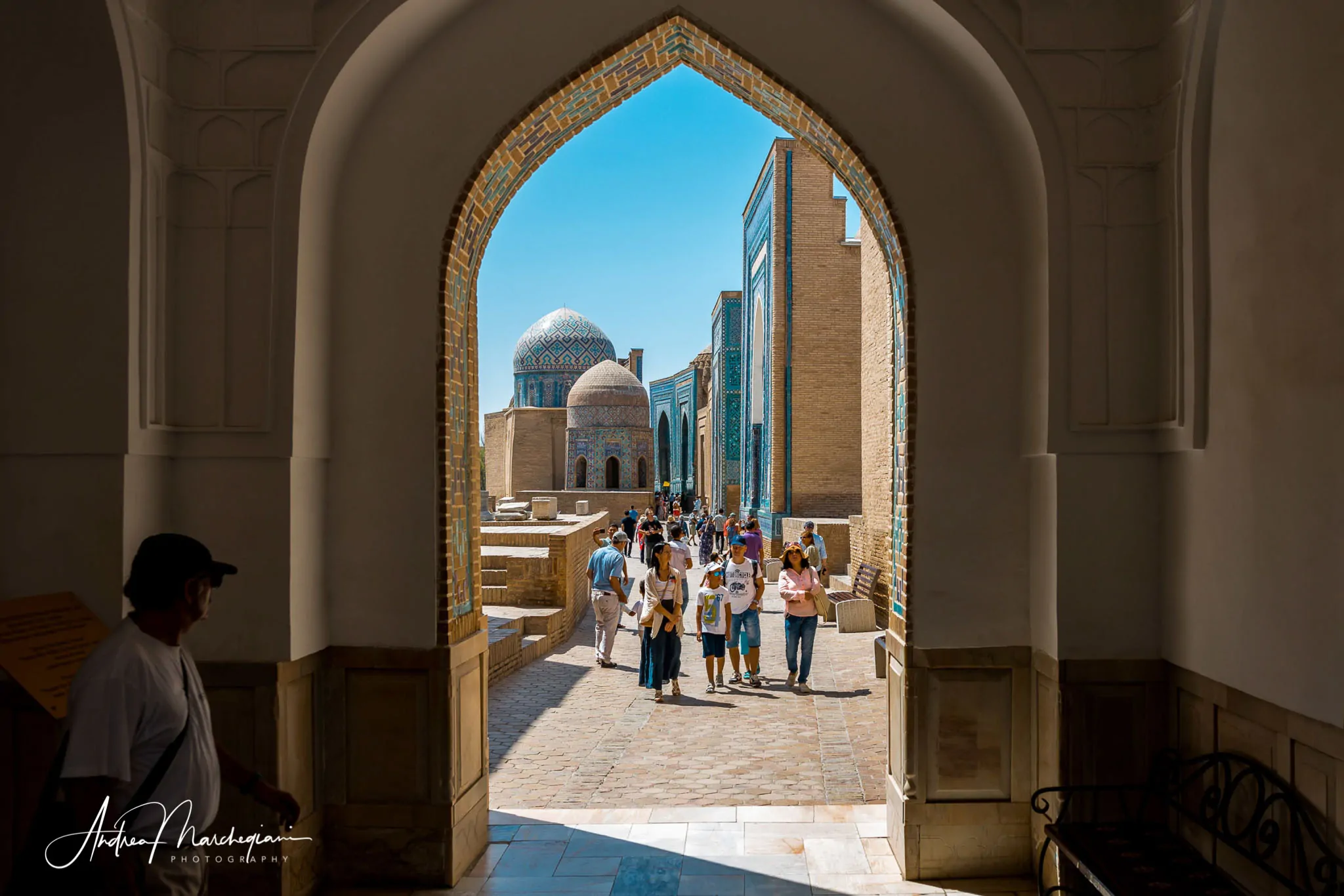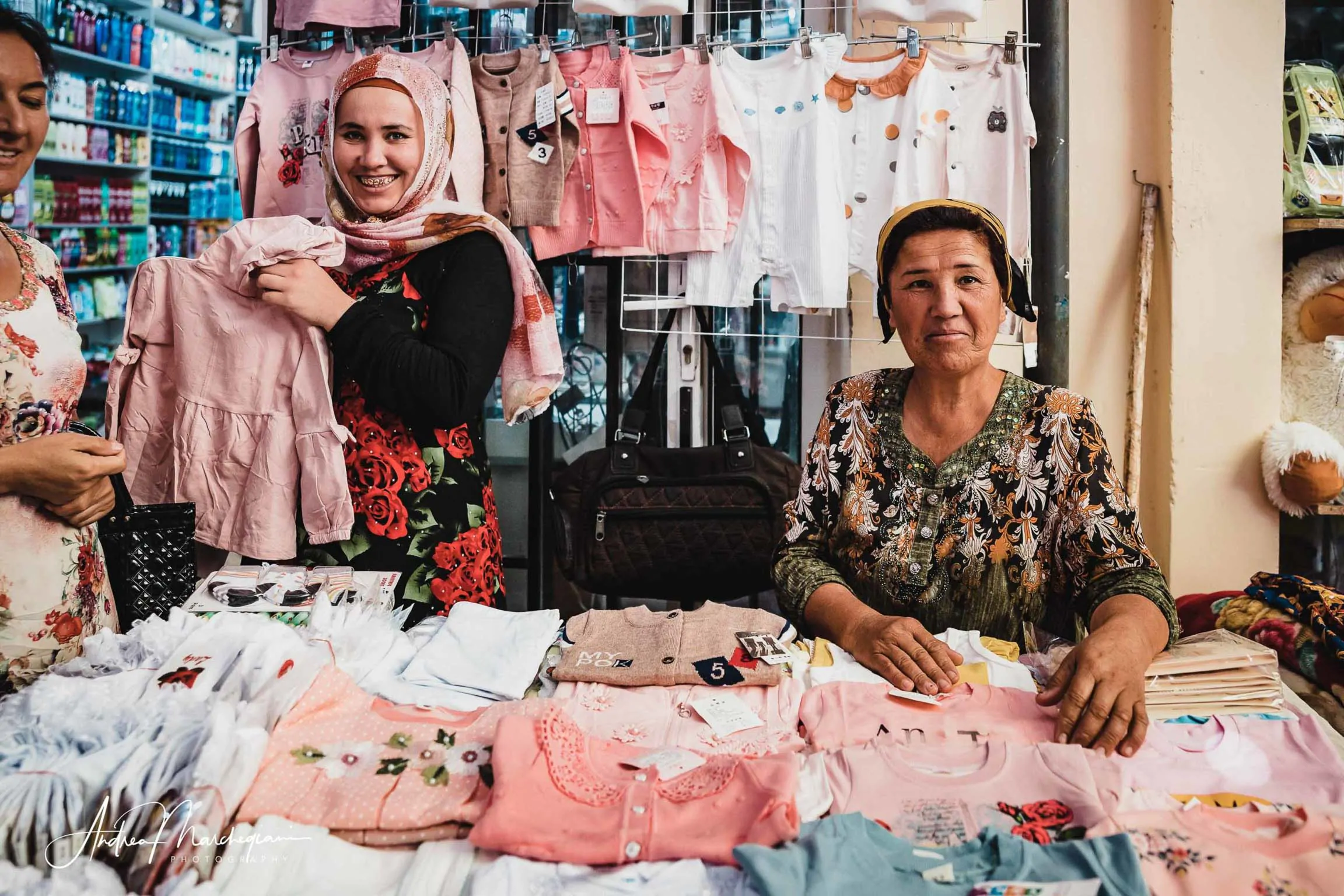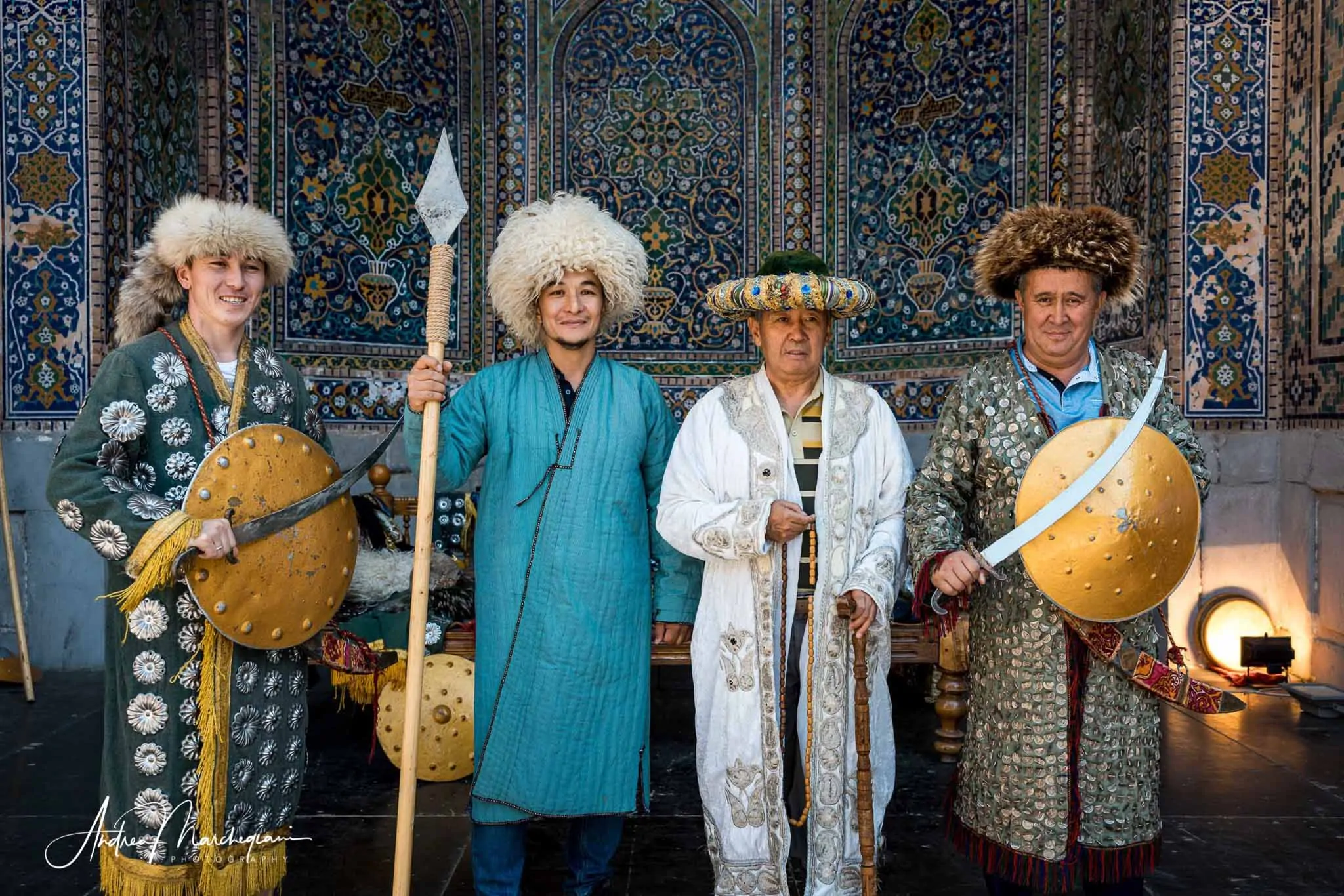
- Home
- Photo Galleries
- Portrait Photography
- Landscape Photography
- Street Photography
- China
- Ethiopia
- India
- Holy Ganges
- Varanasi
- Varanasi Ganga Aarti
- Varanasi, Manikarnika Ghat
- Varanasi Streets & Alleys
- Varanasi Demolition
- Varanasi Fruit Market
- Sarnath
- Brick Kilns
- Tamil Nadu, Chennai & Mamallapuram
- Tamil Nadu, Fort Tirumayam & Madurai
- Tamil Nadu, Tiruvannamalai & Thanjavur
- Kerala, Munnar
- Kerala, Peryiar
- Kerala, Backwaters
- Kerala, Kochi
- Kazakhstan
- Myanmar
- Senegal
- Uzbekistan
- Travel Blog
- China
- Ethiopia
- India
- Tamil Nadu & Kerala
- Varanasi
- Whato to do in Varanasi
- Varanasi Life along the Ghats
- Varanasi Death along the Ghats
- Varanasi Ganga Aarti Ceremony
- Varanasi demolished to honor Shiva
- Varanasi Fruit Market
- “Varanasi, A Journey into the Infinite”
- Sarnath
- All about River Ganges
- Holy Shit. All about Indian Cow Dung
- Clean India Project
- Brick factories
- Tilaka, pundra, bindi: what is the mark on Indian foreheads?
- Kazakhstan
- Mongolia
- Ulaanbaatar, the coldest capital in the world
- What to do in Ulaanbaatar
- Chinggis Khan Museum, 6 floors of Mongolian history
- Gorkhi-Terelj National Park and Bodgkhan Natural Reserve
- Altai Mountains, Things to do in Olgii and Sagsai
- Living with the Eagle Hunters
- Sagsai Eagle Festival
- Navrus Festival
- Xöömej, Mongolian throat singing
- Mongolian Food
- Myanmar
- Senegal
- Uzbekistan
- Latest Posts
- Photography Blog
- About
- Prints
Tashkent subway is one of the most beautiful in the world but nobody noticed since it was forbidden to take photographs of it!
Share with your friends:
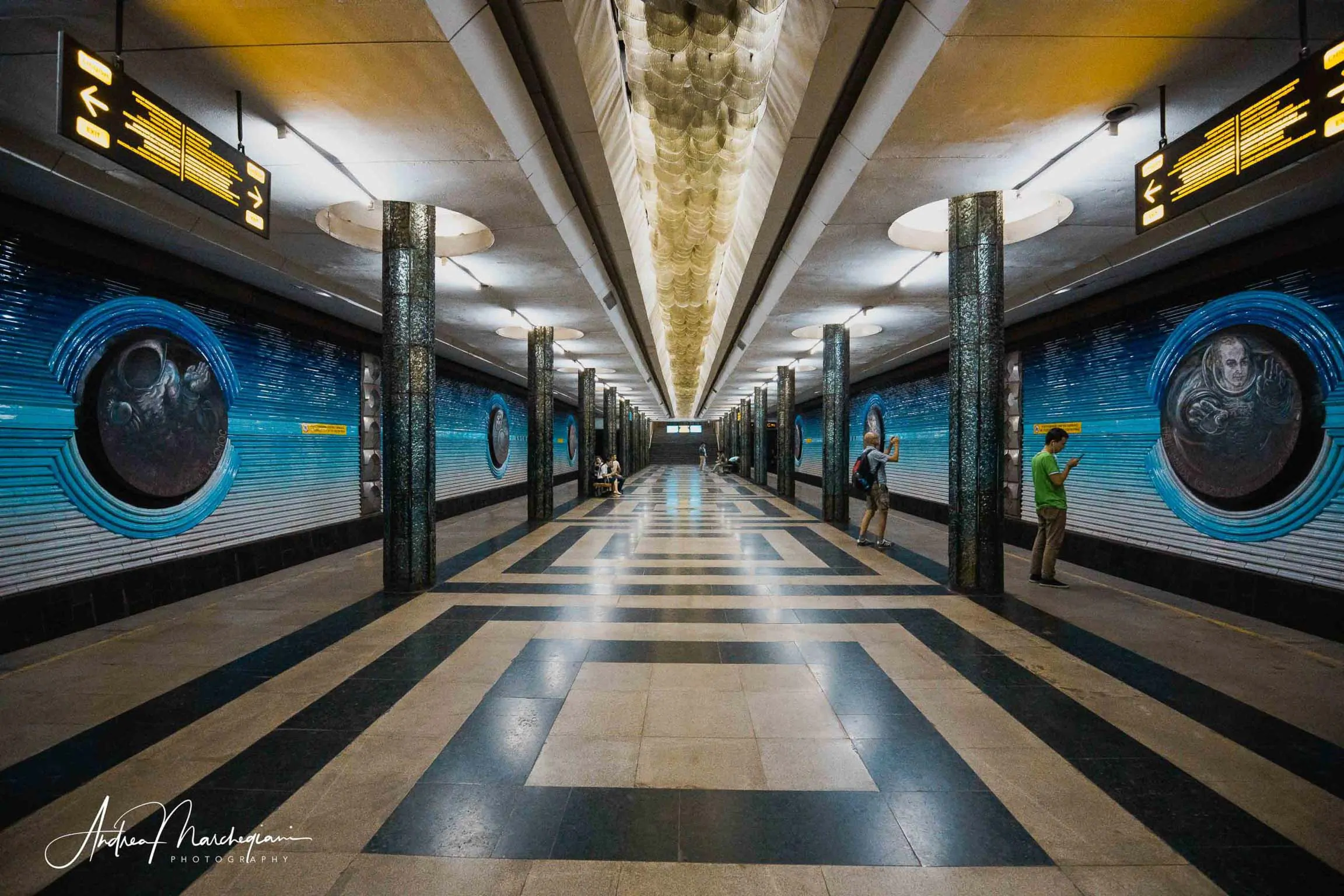
Like many travelers visiting Uzbekistan, I will only stay a few hours in Tashkent before flying home. So, I hire a tourist guide and go for a quick visit to the Uzbek capital.
The streets are covered with posters of Al Bano. “His tour is highly anticipated here in Uzbekistan,” says Mrs Shoista. She speaks excellent Italian, unlike the other guides who have followed me so far, and this will make my day in Tashkent very enjoyable.
“In Uzbekistan you seem to love Italian music very much”, I answer. “In Bukhara I listened to Celentano, Al Bano and Ricchi e Poveri on every street corner!”
The car flanks a tall open book-shaped building. “That’s the famous Hotel Uzbekistan. It’s only 100 meters from Timur Square. It is 17 storeys high and was built in typical Soviet style. Due to its central location, just a few meters from the metro station, and the beautiful views of the city, many tourists stay here”.
As soon as we get out of the car, my eyes trip over a shop selling Panini stickers. With its 5 million figurines sold worldwide, the Italian company is the undisputed leader in the industry. Something all Italians should be proud of!
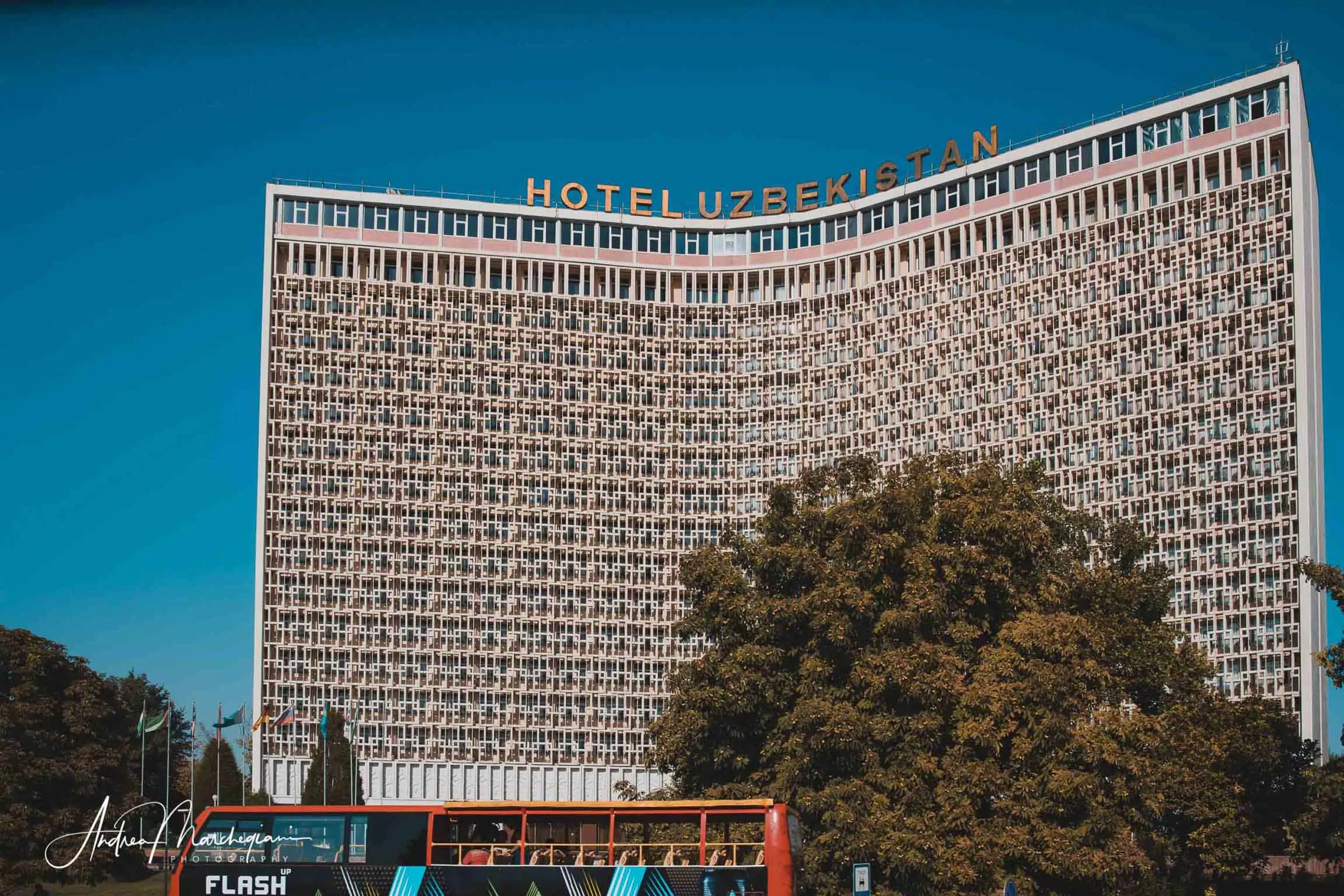
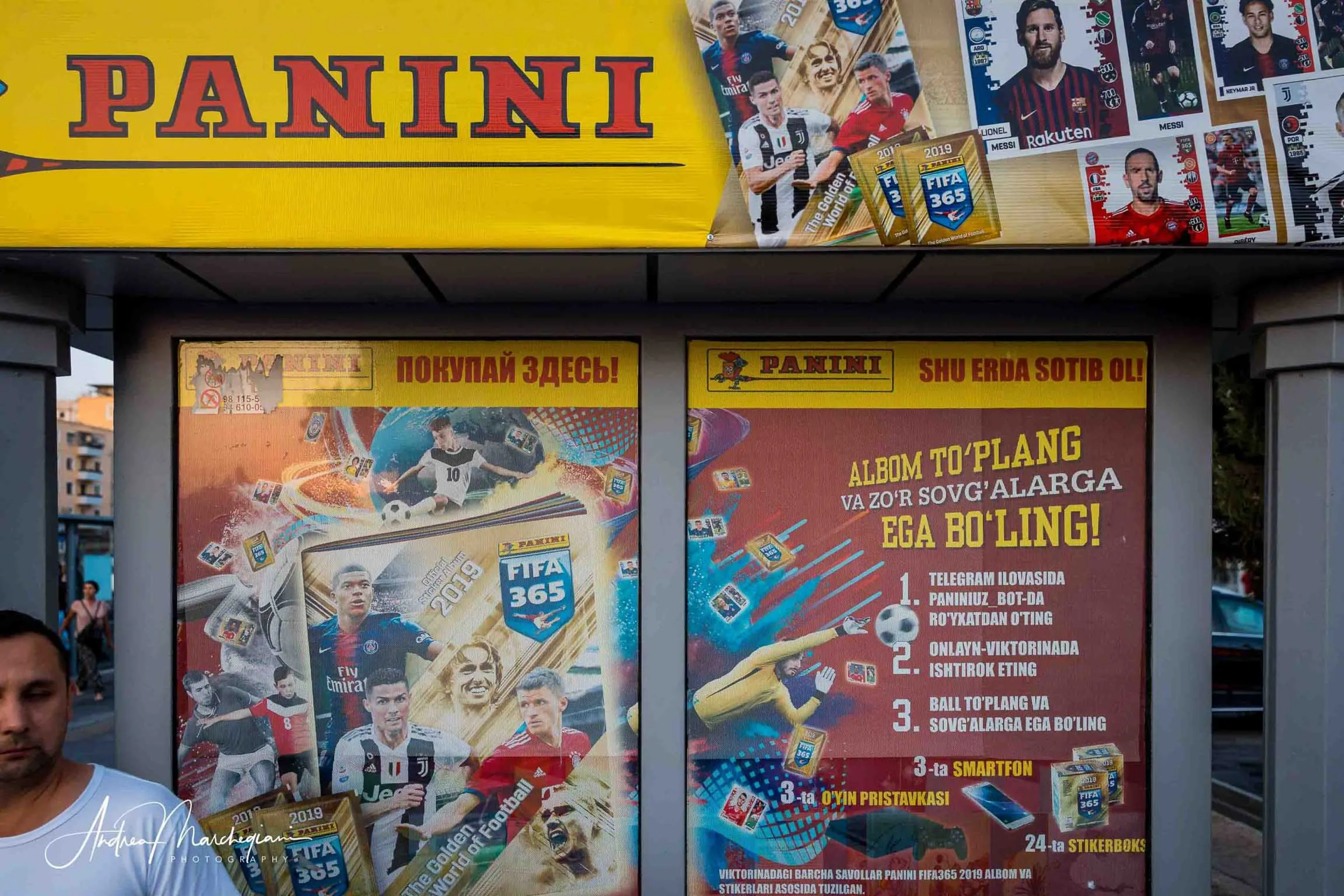
“Tashkent is often little appreciated by tourists, who come to Uzbekistan to experience the magic of the Silk Road. Here there are modern districts and institutional buildings that are perhaps less suggestive, but living in this city can give great satisfaction. There are many green areas and large parks, great clubs and restaurants.”
Like Khiva, Bukhara and Samarkand, Tashkent was a caravan town on the Silk Road, suffered Muslim domination and was destroyed by the fury of Genghis Khan. In the 19th century, it fell under the control of the Soviet Union and in 1930 became the capital of Uzbekistan.
In 1966, a violent earthquake destroyed a large area, forever changing its face. The reconstruction of the city took place in the 1970s, mostly following the austere Soviet style.
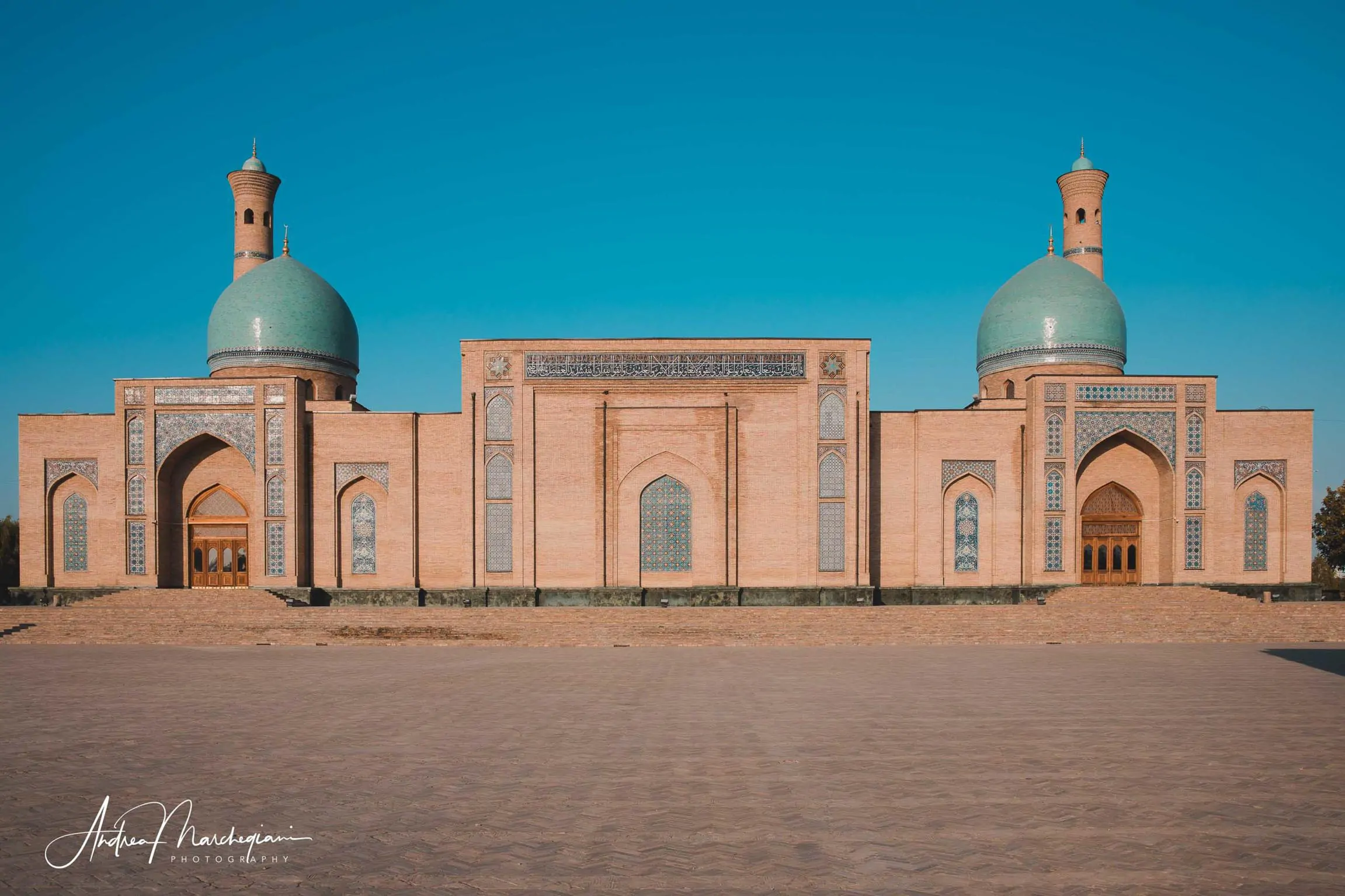

Hazrati Imam Complex
The first stop on the tour is the vast Kast Imom Square, with the Hazrati Imam Friday Mosque. Flanked by two colossal 54-meter minarets, the mosque is the official religious center of the republic and dates back to 2007, when it was built at the behest of former President Karimov.
Mrs Shoista explains that the complex houses several buildings of great religious importance but that, due to the time limits, we will dedicate ourselves only to the visit of the Museum of Moye Mubarek. “You can not make any kind of photos and please comply with this ban. The museum houses the Koran of Osman, which dates back to the seventh century and is the oldest in the world”.
The presence of armed guards inside the museum discourages any attempt at transgression. The famous Koran of Osman, of considerable size, is kept in a case in the center of the room, with its deerskin cover. In the past, Timur had taken it to Samarkand, then it was transferred to Moscow and, finally, in 1924, Lenin gave it back to Tashkent as a sign of friendship. It’s the biggest treasure in the city, but it’s not the only artifact in the museum. You can see dozens of other Qur’ans, some so tiny in size that they’ll make you smile.
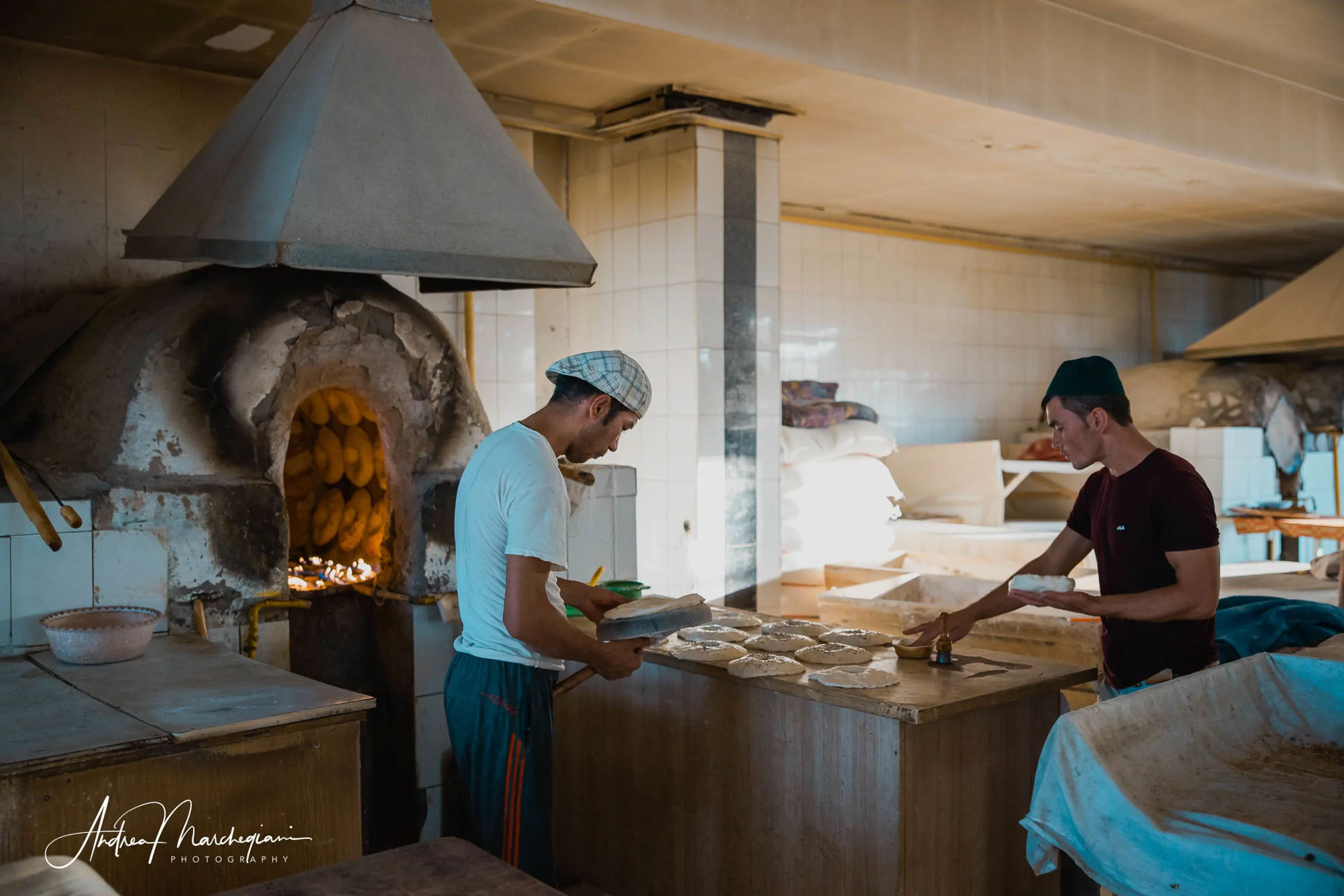
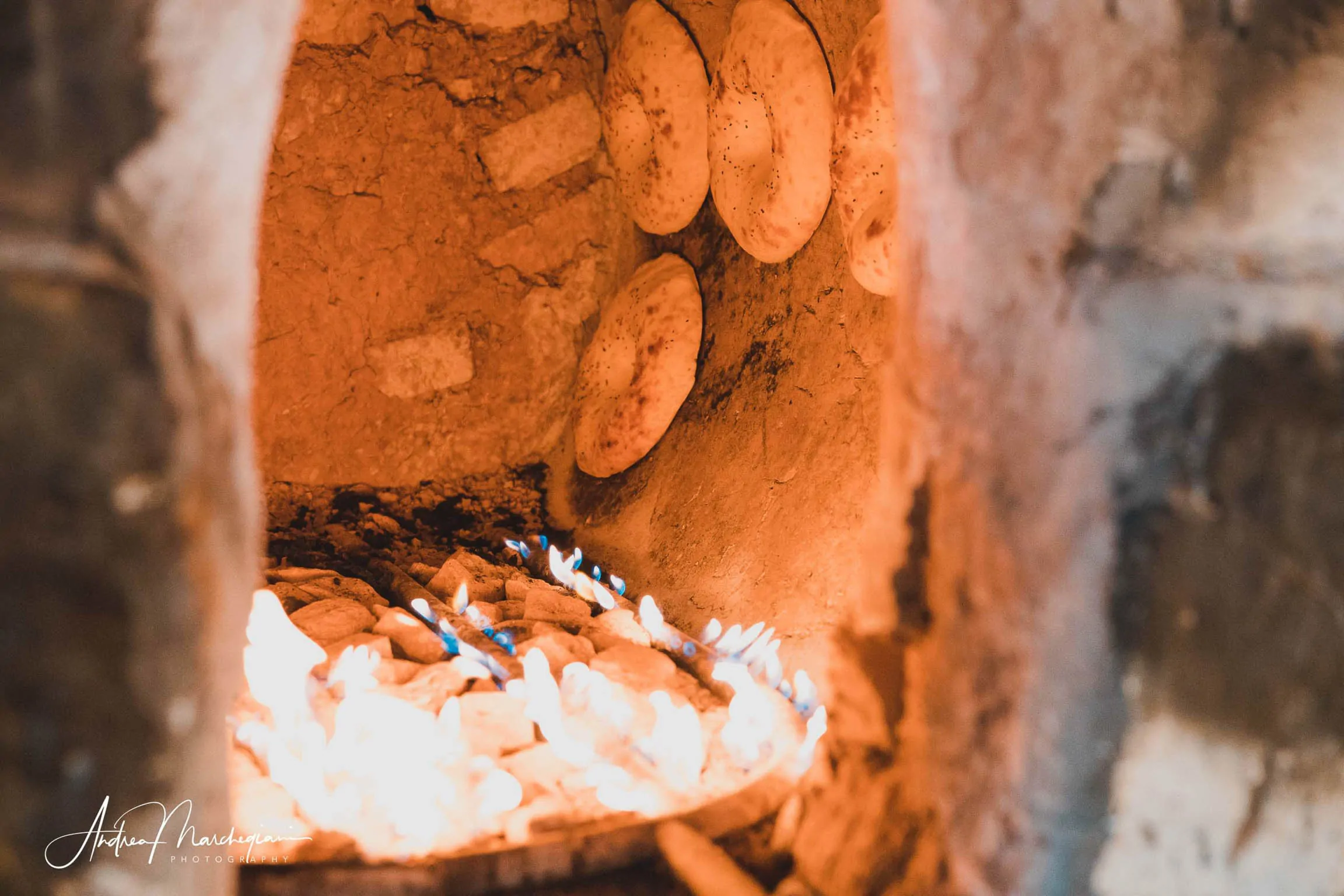
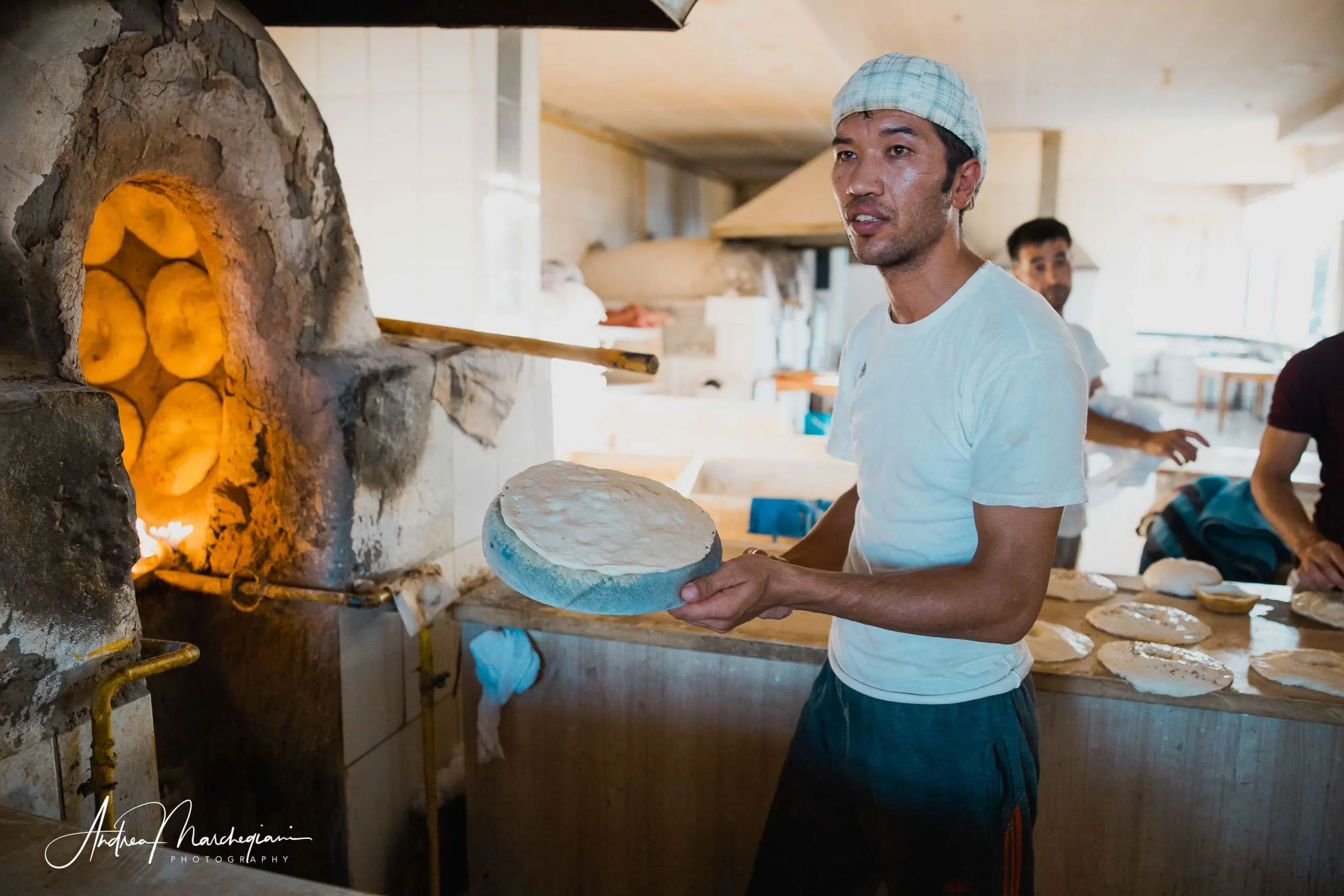
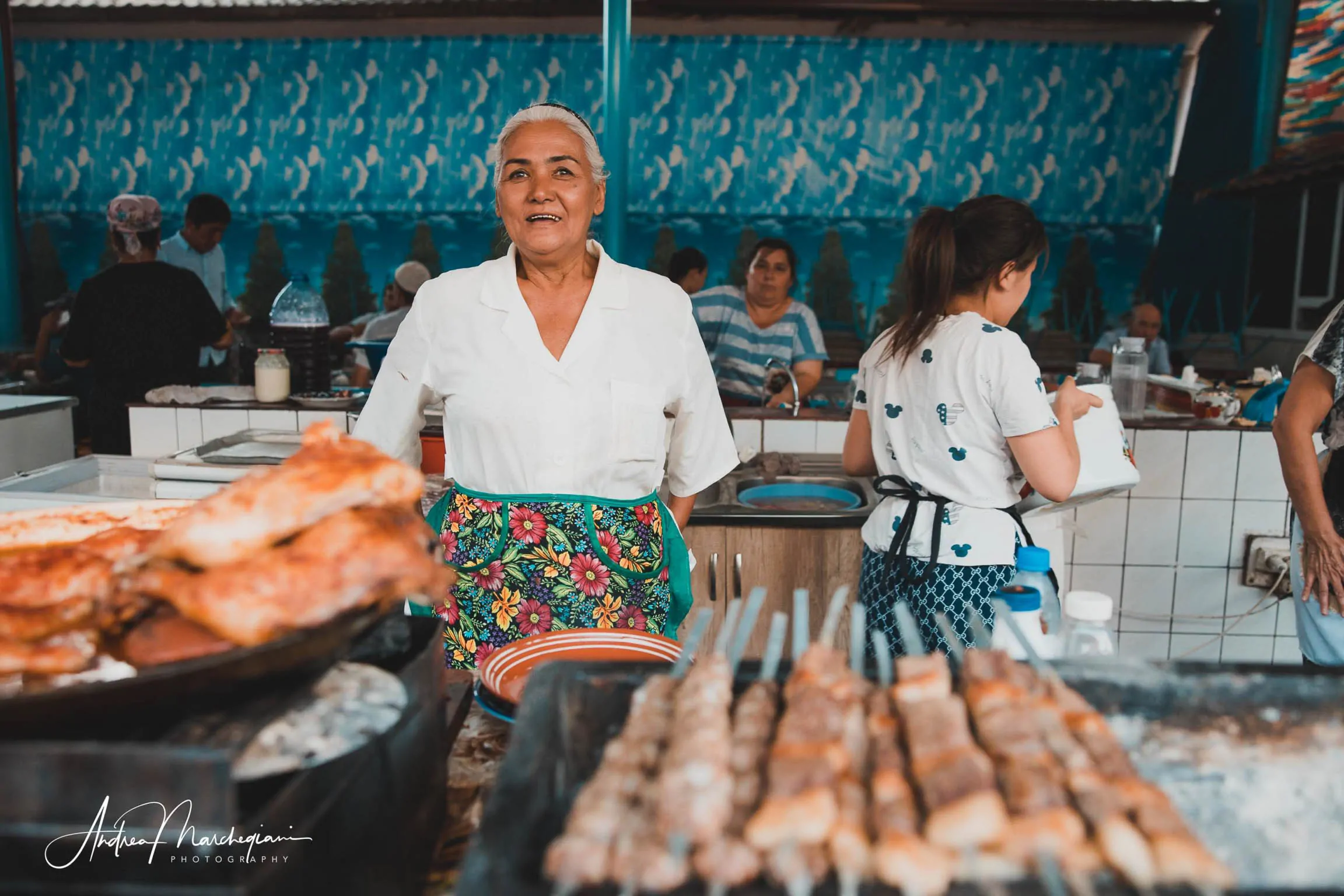
Bazar Chorsu
The most famous market in Tashkent is the Chorsu Bazaar, which is located in the heart of the old town. Unfortunately we are visiting it at closing time and many desks are already closed.
We approach a bakery where there is a typical tandoor ovens. Firewood is burning in the overturned clay bell and the typical Obi-Non buns are cooking on the side walls. With the typical Uzbek hospitality, the bakers invite me to come closer to take a look. The discoid-shaped dough is slapped against the inner walls of the oven with quick and decisive movements. Not a single one falls down!
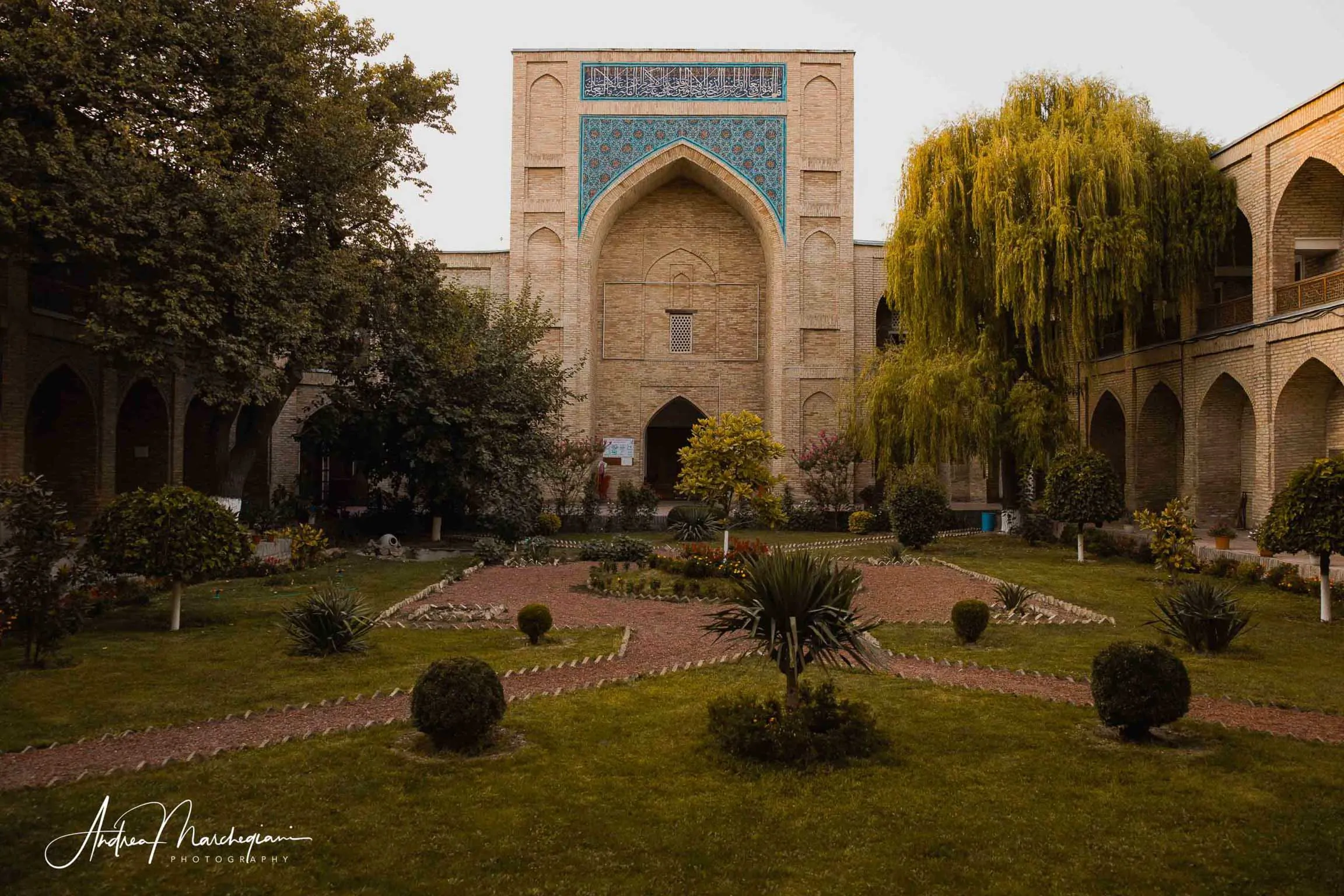
Madrasa Kukeldash
Just outside the market is the Kukeldash Madrasa, with its lovely inner courtyard. Dating from the 16th century, it was built by the Shaybanid dynasty. “The madrasa was closed during the Soviet period, when it became a museum of atheism,” explains Mrs Shoista. “Currently the Koranic school has been reopened and it is a great honor for families to let their children study here.”
The ban on Islam fell with the Soviet regime, but the Uzbek mentality remained secular. Former President Karimov, who ruled until 2006, suppressed in blood all forms of fundamentalism, even though today we are witnessing the rebirth of a new religious fervor among young people.
“Many things are changing in Uzbekistan”, the guide comments. “The new president Mirziyoyev has opened up to the privatization of essential services. In recent years, we have seen impressive increases in domestic consumption; the country has opened up to the market economy, with the result that the production of fruit and vegetables, one of our excellences, is now largely destined for export. Buying vegetables has become very expensive for an ordinary citizen. It is really absurd”. I reply that this is the price of democracy and that her description fits most Western nations, where capitalism reigns supreme. “Today, thanks to Mirziyoyev, we have more freedom of expression but crime rates have skyrocketed.” Unfortunately, these are well known contradictions to us.
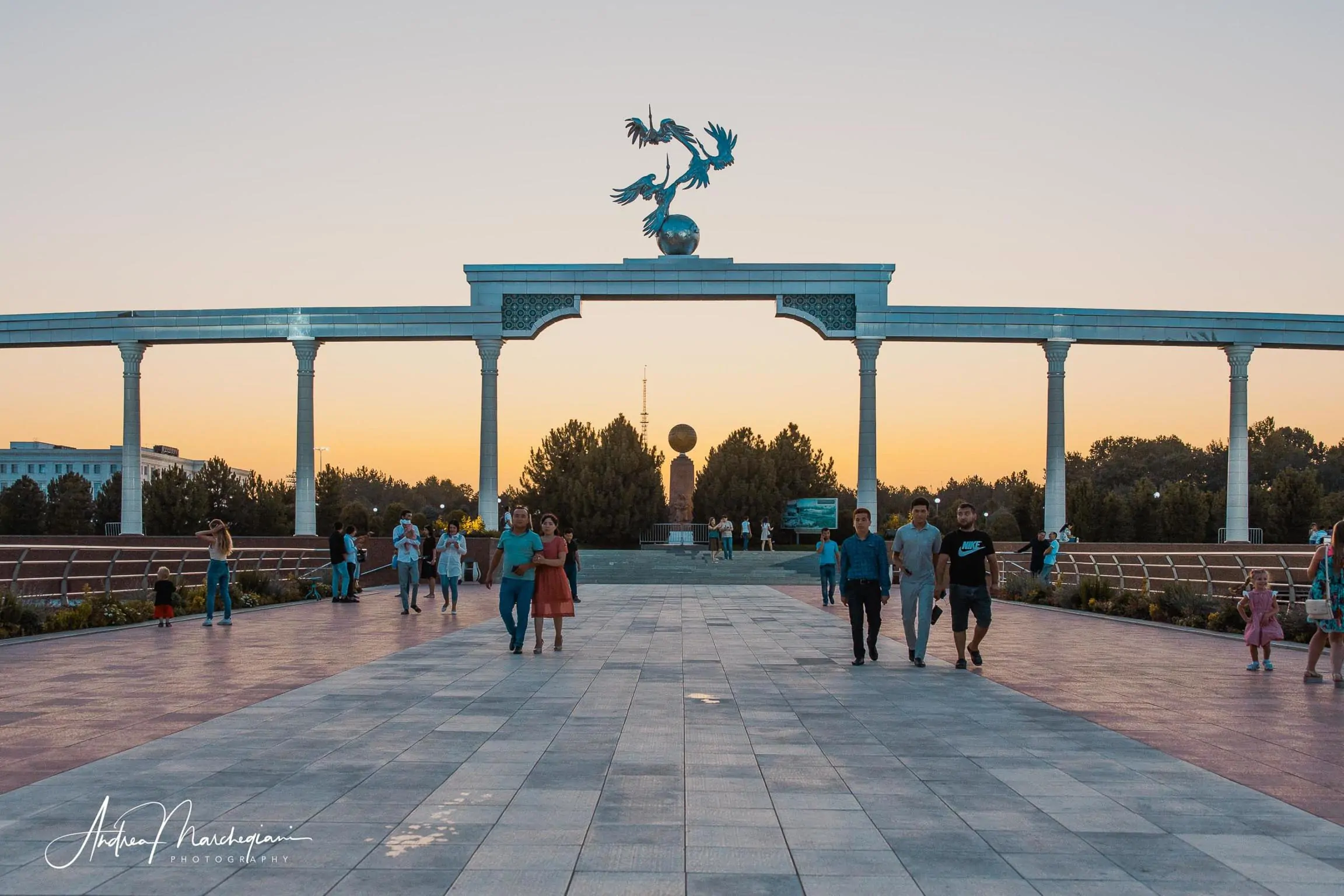
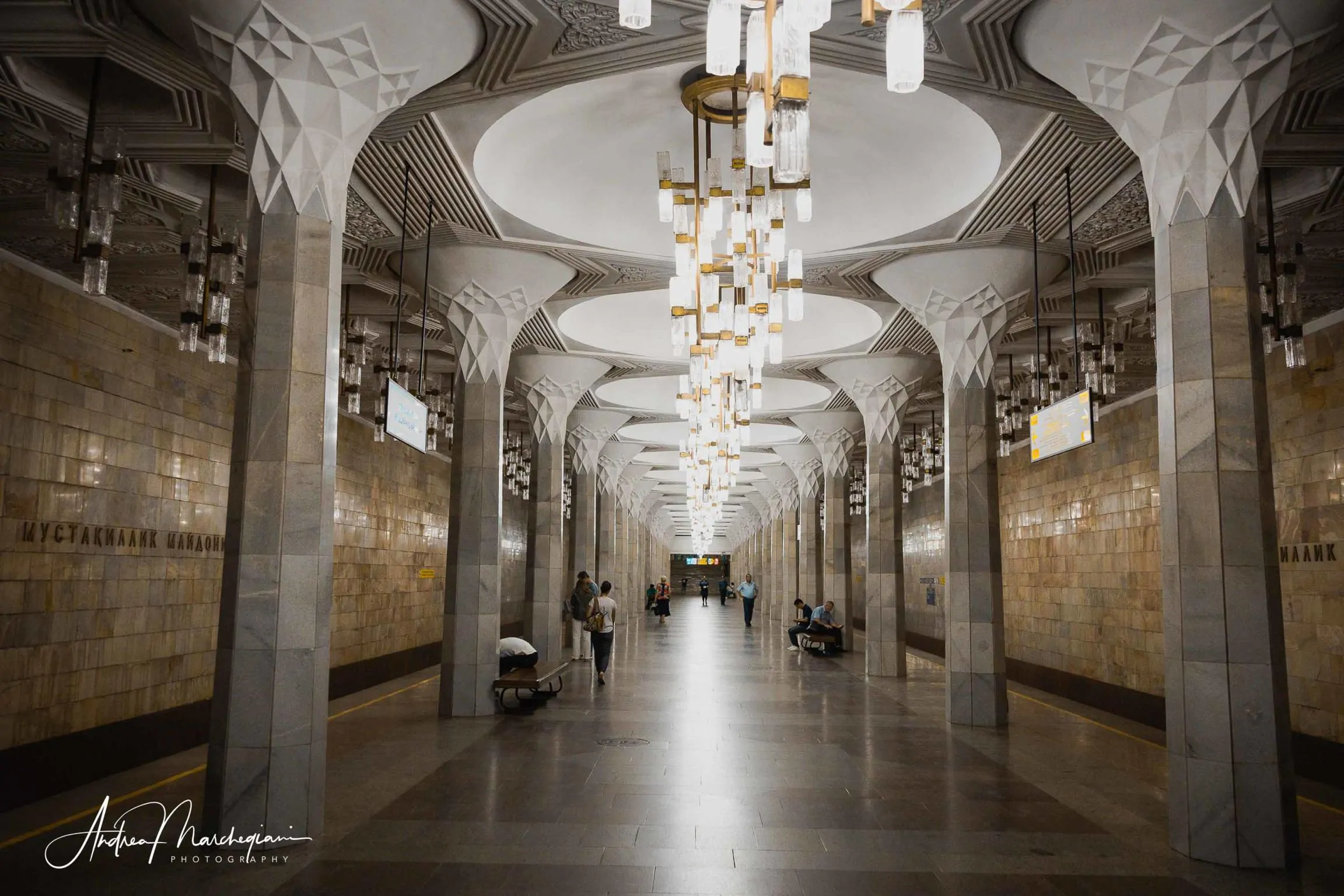
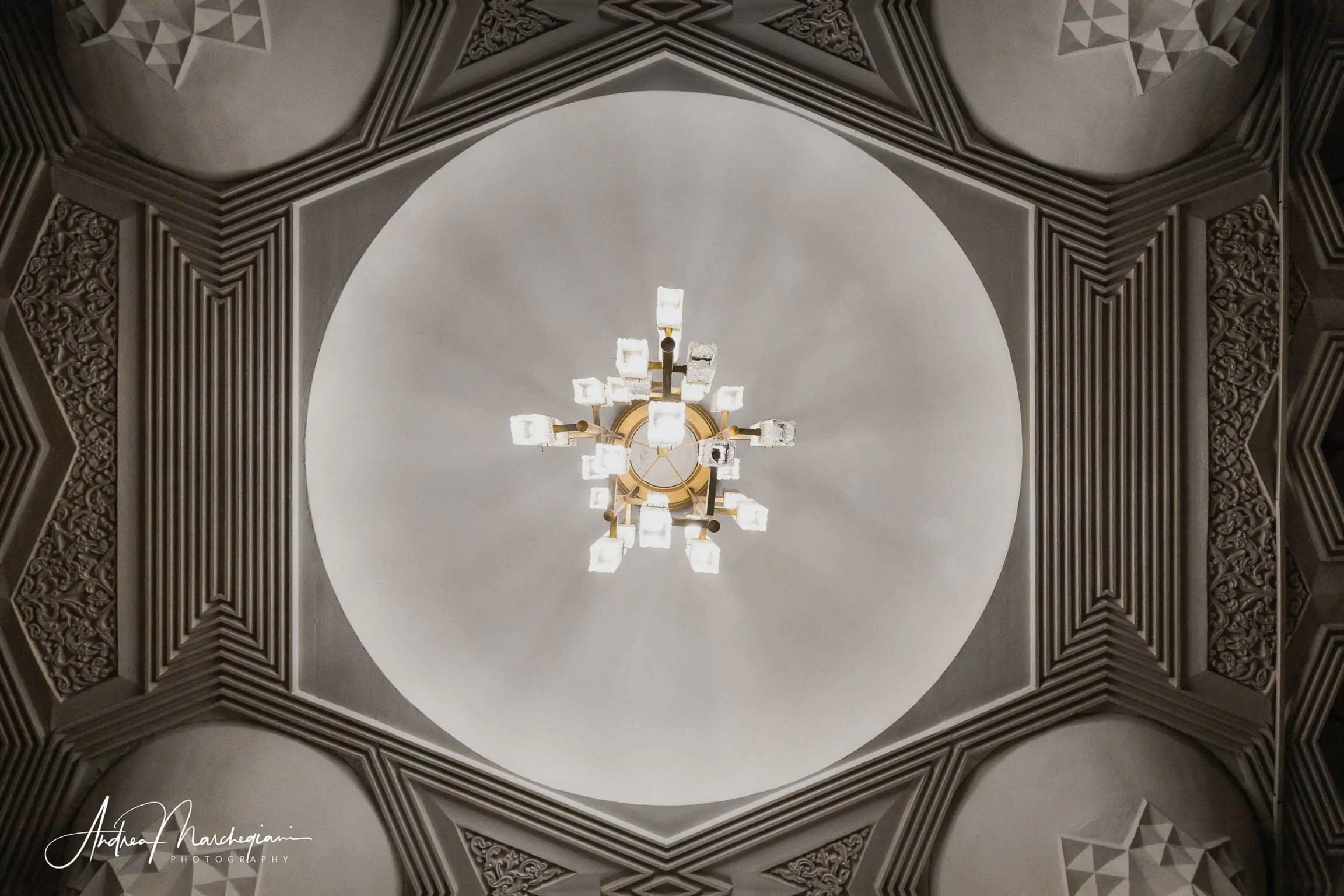

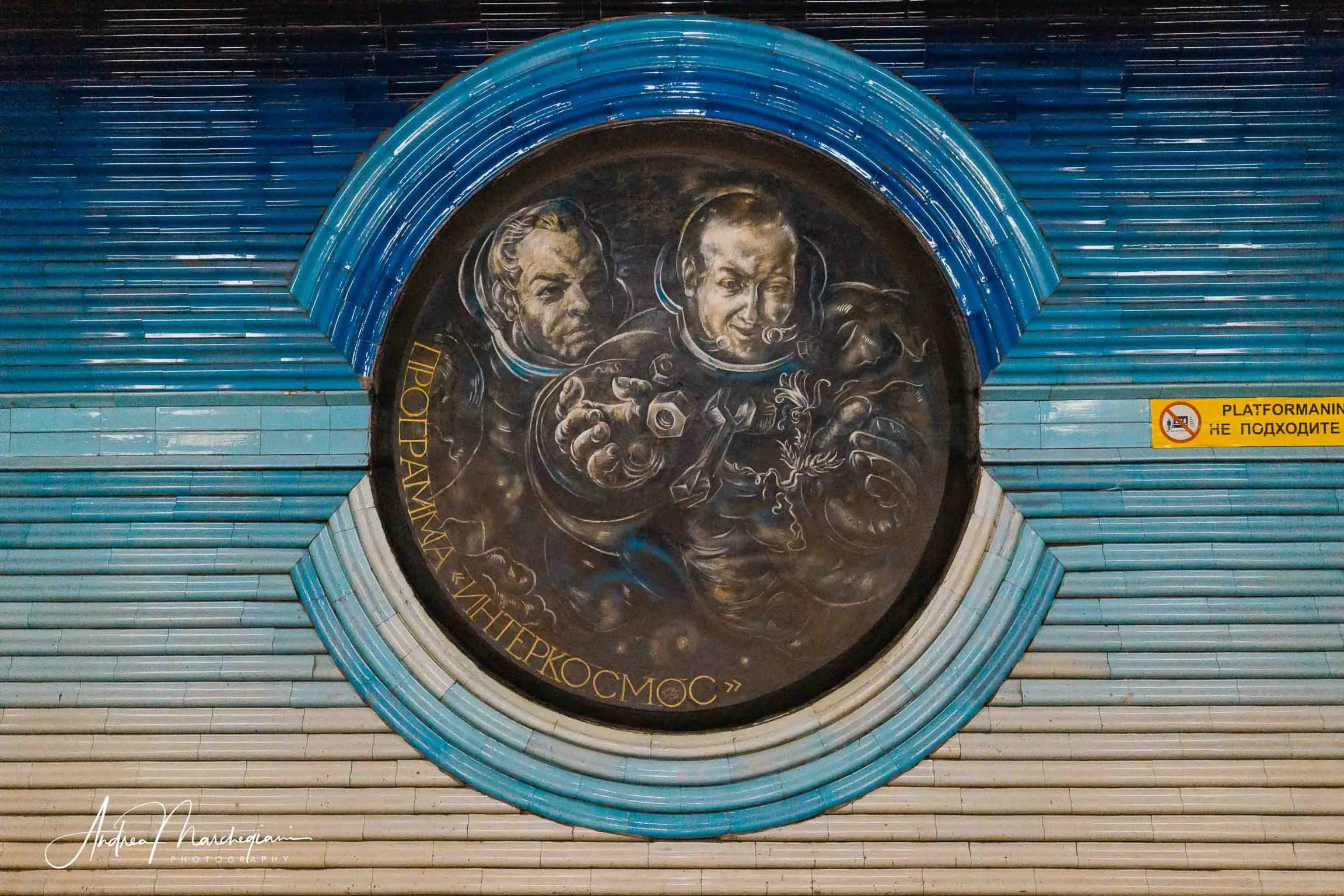
Tashkent Metro
The last stop of our guided tour is a ride in the beautiful Tashkent metro. We descend to the station from Independence Square, with the monument to the fallen of the Second World War and the sculpture with the flight of three storks.
“Tashkent boasts the first metro system built in Central Asia,” explains Mrs Shoista. “It was started in 1968, with the aim of modernizing the infrastructure of the city, destroyed by an earthquake in 1966. When it opened in 1977, it offered only one railway line with twelve stations. Since then, two other lines have been added, connecting all parts of the city, but the stations designed by the Soviets show the most beautiful decorations“.
Each station has a specific theme, which is developed in the wall decorations, the style of the vaults and the chandeliers.
Kosmonavtlar station, for example, is dedicated to Soviet space adventures and depicts the astronomer Ulugbek, nephew of Tamerlane, the Soviet cosmonaut Yuri Gagarin and Valentina Tereshkova, the first woman in space.
The Paxtakor station is dedicated to the cultivation of cotton, of which Uzbekistan was the main producer among the countries of the Soviet Union.
The subway was designed to serve as a bomb shelter, so until 2018 it was forbidden to photograph it, for national security reasons. This kept its beauty unknown to the world. Today the country has come out of its historic isolation, the visa application for tourists has been abolished, so photographs of its beautiful decorations are starting to circulate and arouse great appreciation and amazement.



